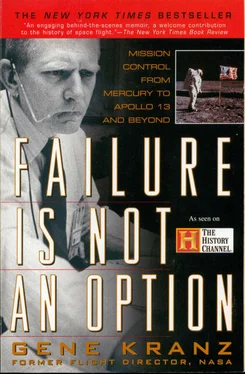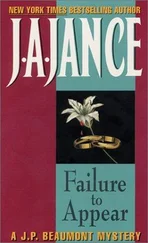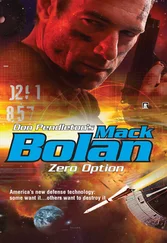After three days on the surface, the White Team gave the Go for the lunar liftoff. To the delight of the science team, Young and Duke had performed three EVAs at Descartes. We had waved off the first Apollo 16 landing attempt, worked out the problem, and ultimately achieved our objectives.
Two of the young controllers, Don Puddy and Phil Shaffer, members of the new generation, had earned the title “Flight” and would lead the teams into the next era of space.
Apollo had one more mission to go. The end was no longer beyond the horizon. For this one, hotel rooms at the Cape and in Houston would be reserved for months ahead. The airlines had a waiting list on flights into every airport in the area. The topless go-go bars on the beach would be so crowded that the cops would not be able to get into them to close them down.
Apollo 17 was going to be a tough, dramatic, and melancholy mission, the last lunar strike. It would mark the end of an all-too-quick decade in our American history, where we grabbed for the brass ring and got it on our first try. The lunar missions thoroughly absorbed us, and, in our haste, we never took the opportunity to savor the moment. Lunney often said that we were drinking wine before its time.
When Apollo ended, so would my life as a flight director. A new generation of flight directors was trained—the “top guns” of Mission Control, smarter, quicker, more responsive than we were. I was the last of the initial group of flight directors, an anachronism. I had the experience and the mission judgment, but I could see that I was compromised by events and near misses. There is a saying in aviation: “There are old pilots, and there are bold pilots, but there are no old, bold pilots.” It is doubly tough when you have to make decisions about another person’s life. As flight directors, we had made calls that only by the grace of God turned out right. But that was our life. The new flight directors were in a better position to manage this risk more objectively, balancing the odds and pressing to the objective. Watching Phil Shaffer, Skinny Lewis, Don Puddy, and Neil Hutchinson during their training, I felt old at age thirty-nine.
The preparation for Apollo 17 kicked in during the first week of September. We began our bittersweet planning for the final mission to the mountains of Taurus, near the giant crater Littrow. (These sites were named for the constellation Taurus, the bull, and nineteenth-century astronomer Johann von Littrow.) The landing site was a flat-floored valley four miles wide, bordered on three sides by high mountains. The valley contained numerous craters that might be volcanic in origin and of great interest to the scientists. It was going to be one hell of a mission, the grand finale to Apollo. I was proud that we would plant a sixth American flag on the Moon. But I could only wonder when and where we would plant the next flag.
Gene Cernan, the Apollo 17 commander, and Dave Scott, on Apollo 15, were probably the most outspoken in their feelings about our country, patriotism, and commitment. Maybe it was just the times we lived in that we needed reminders of what we stood for. The world around us seemed to be going haywire. With the gradual withdrawal of U.S. ground troops from Vietnam, it was left to the Navy and Air Force pilots to pound North Vietnam, while the South tried to stabilize its defenses. Any military man knew it was a lost cause, and I was ashamed of the way our nation hung South Vietnam out to dry. The Munich massacre of Israeli athletes during the Summer Olympics, protests at the national political conventions, and the attempted assassination of former Alabama governor George Wallace were the background for the final Apollo mission.
December 6, 1972, Apollo 17
There were the usual notes in the flight director’s log when I saddled up on the console at 5:53 P.M. Central Standard Time to launch Apollo 17. This was an Apollo first, a Saturn V launch that would be seen rising on a pillar of fire in the night sky, before pitching over and starting its thrusting to the east, toward Africa, and carrying Cernan, Jack Schmitt, and Ron Evans on their way, our last ambassadors to the Moon.
Griffin had left several notes on the countdown funnies. He had reviewed a master alarm with Evans on the phone and closed out a battery problem as acceptable for launch. Trust is key in our business. If someone says a problem is closed, it is closed. In flight control, if you didn’t have trust in your fellow controllers you could not get the job done.
In the last hour the launch countdown became a nightmare. Data faults began occurring around the world, then the Mission Control Center experienced a series of power glitches and the display system failed while I was conducting my launch status check. The maintenance team swung into action while the controllers dug for the procedures in case they had to move to adjacent working consoles. It was almost as if our ground system were reluctant to send the final Apollo on its last journey to the Moon. The problem was fixed by launch minus seven minutes and the count continued.
Sixteen seconds to launch, a Saturn auto sequence cutoff was issued. The liquid oxygen tank pressurization did not start automatically. Again the team swung into action to provide the launch updates to the Cape team.
During a launch hold, the trajectory ground track changes on a minute-by-minute basis throughout the launch window, due to the Earth’s rotation and the changing geometry of the lunar trajectory. As soon as the launch hold is confirmed, the recovery forces and communications relay aircraft start moving southward, perpendicular to the ground track at maximum speed.
The countdown went through two recycles before the problems were corrected, finally lifting off almost at the end of the four-hour launch window. We were hard pressed to keep every aspect of the system in sync, but finally Mission Control was “Go for launch” of Apollo 17.
At 11:33 P.M. CST, the Saturn literally glowed as it left the launch pad. Night became day in a brilliant flash, a beacon for all America, all the world to see, as a symbol of the power of a free and open society.
The terse, calm controllers’ reports wiped away my last vestige of sentiment and emotion on the world’s final launch of a Saturn V rocket. Only during my final shift as a flight director, during the lunar phase, did emotion creep back in.
Launch and translunar injection were flawless. From then on it was a series of farewells for the “elite team” in Mission Control. The Saturn booster team, assigned by the Marshall Space Flight Center to my division, signed off for the final time after maneuvering the booster for the lunar impact. This crackerjack team, led by Scott Hamner, Chuck Casey, and Frank Van Renssalaer, had broken through the political and inter-center rivalries that stretched from Alabama to Texas to Florida, welding a partnership with my division and especially the Trench. “They was us” was Llewellyn’s simple tribute to the booster team as it left the console for the final time.
Cernan’s crew was probably the most relaxed of the Apollo crews. The day before the launch, the three of them had left the rules in shambles, violating their isolation to go duck hunting on a nearby farm. A pack of reporters was on their heels, but agreed not to write anything until after the flight, a reflection of the team spirit that sometimes infected even the press. Besides, this was the last roundup. Everyone understood that the usual protocol did not apply. The mellow attitudes of the Apollo 17 crew were also due in part to the fact they had no crises in the early going that threatened the mission. Another factor may have been the temperament of Cernan, a Chicago native, Navy captain, and space walker (Gemini 9). Gene had a sense of adventure reminiscent of that of the Mercury astronauts.
Читать дальше












